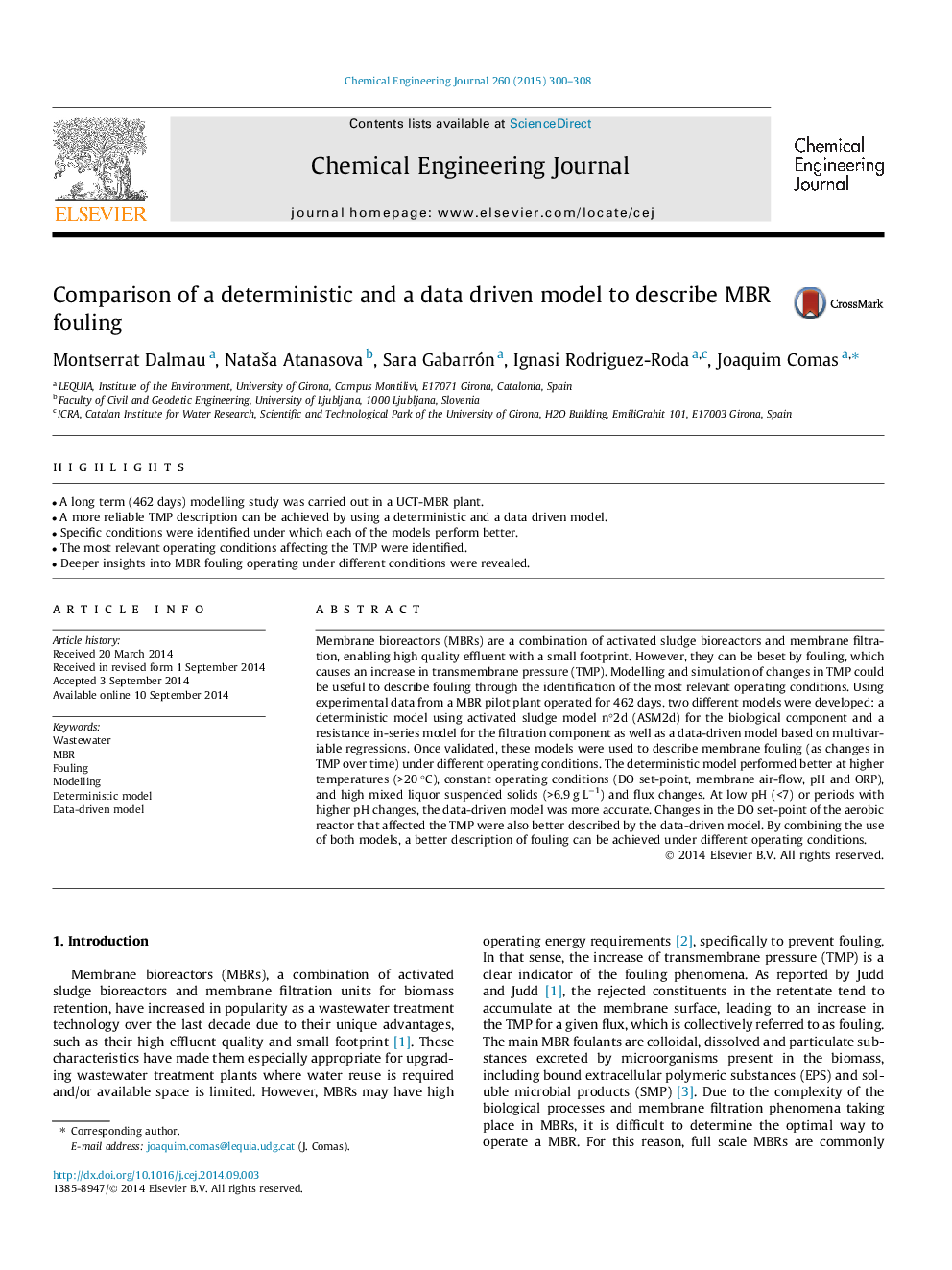| Article ID | Journal | Published Year | Pages | File Type |
|---|---|---|---|---|
| 146747 | Chemical Engineering Journal | 2015 | 9 Pages |
•A long term (462 days) modelling study was carried out in a UCT-MBR plant.•A more reliable TMP description can be achieved by using a deterministic and a data driven model.•Specific conditions were identified under which each of the models perform better.•The most relevant operating conditions affecting the TMP were identified.•Deeper insights into MBR fouling operating under different conditions were revealed.
Membrane bioreactors (MBRs) are a combination of activated sludge bioreactors and membrane filtration, enabling high quality effluent with a small footprint. However, they can be beset by fouling, which causes an increase in transmembrane pressure (TMP). Modelling and simulation of changes in TMP could be useful to describe fouling through the identification of the most relevant operating conditions. Using experimental data from a MBR pilot plant operated for 462 days, two different models were developed: a deterministic model using activated sludge model n°2d (ASM2d) for the biological component and a resistance in-series model for the filtration component as well as a data-driven model based on multivariable regressions. Once validated, these models were used to describe membrane fouling (as changes in TMP over time) under different operating conditions. The deterministic model performed better at higher temperatures (>20 °C), constant operating conditions (DO set-point, membrane air-flow, pH and ORP), and high mixed liquor suspended solids (>6.9 g L−1) and flux changes. At low pH (<7) or periods with higher pH changes, the data-driven model was more accurate. Changes in the DO set-point of the aerobic reactor that affected the TMP were also better described by the data-driven model. By combining the use of both models, a better description of fouling can be achieved under different operating conditions.
